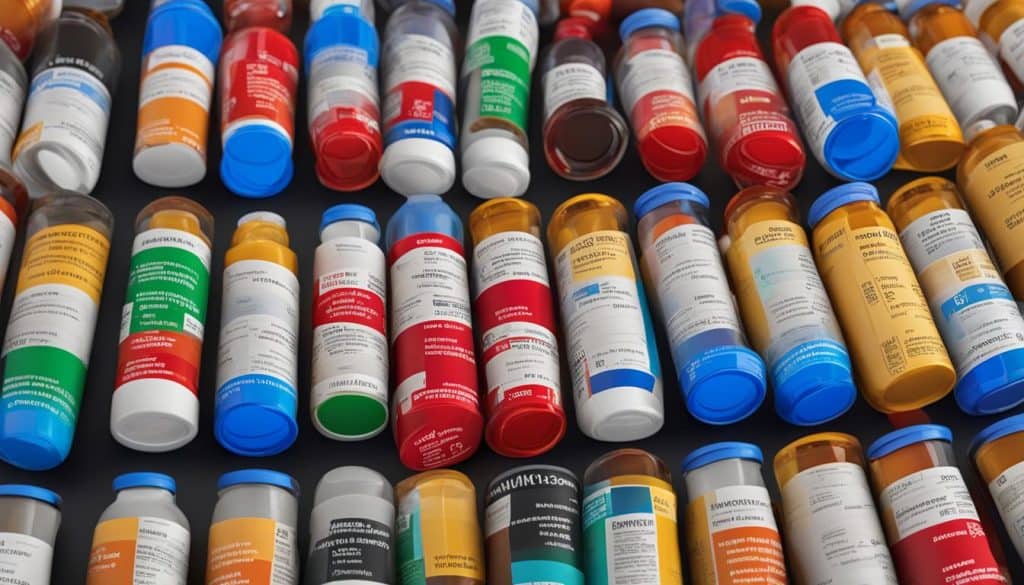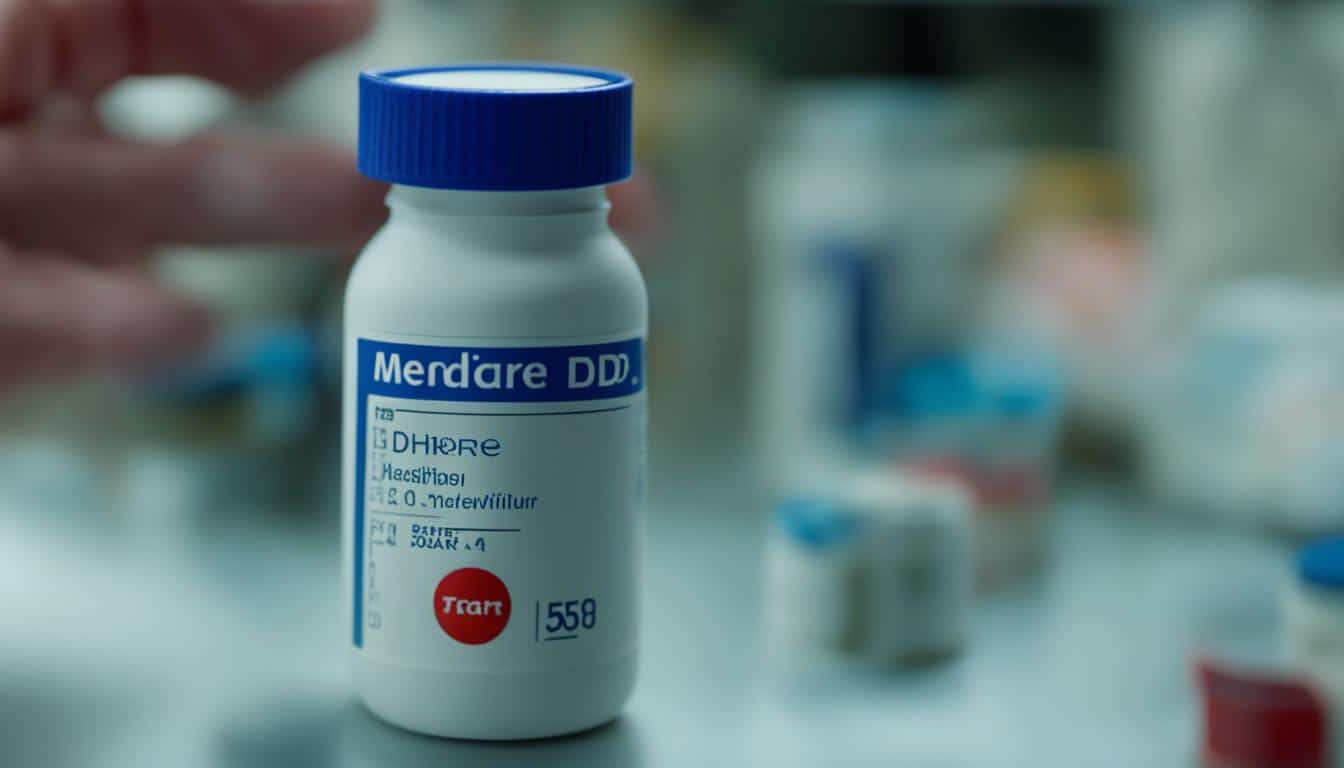If you’re looking for ways to manage your prescription drug costs, Medicare Part D could be an excellent solution. Medicare Part D is a prescription drug coverage program that’s available to anyone eligible for Medicare. It’s designed to help you cover the costs of your medications that aren’t covered under Medicare Parts A and B.
But why is Medicare Part D so important for your health coverage?
Prescription drugs can be a major expense for seniors and those with disabilities. According to recent studies, the average senior takes four or more prescription drugs each month, with the average annual cost of prescription drugs totaling $2,700. Medicare Part D can help you reduce your out-of-pocket expenses for prescription drugs and manage your healthcare costs more effectively.
Key Takeaways
- Medicare Part D is a prescription drug coverage program available to anyone eligible for Medicare.
- It’s designed to help you cover the costs of your medications that aren’t covered under Medicare Parts A and B.
- Prescription drugs can be a major expense for seniors and those with disabilities, with an average annual cost of $2,700.
- Medicare Part D can help you reduce your out-of-pocket expenses for prescription drugs.
- Integrity Now Insurance Brokers is a Medicare insurance agent that can help guide you through the process of selecting the right Medicare Part D plan for you.
Understanding Medicare Part D: What You Need to Know
Medicare Part D is a federal program that helps to lower the cost of prescription drugs for Medicare beneficiaries. If you’re enrolled in Medicare, you’re eligible for this coverage, regardless of your income or health status.
Part D coverage options vary by plan and insurer, but they generally cover a wide range of prescription drugs, including both generic and brand-name medications. Some plans may have more restrictive formularies, so it’s important to review plan details carefully to ensure that your medication needs will be met.
In addition to copayments and deductibles, Medicare Part D also includes a coverage gap known as the “donut hole,” which starts when you and your plan have spent a certain amount on drug costs. During this gap, beneficiaries are responsible for a larger share of drug costs until they reach a certain limit.
It’s important to keep in mind that Medicare Part D works in conjunction with other parts of Medicare, such as Part A (hospital insurance) and Part B (medical insurance). If you’re already enrolled in Medicare, you can typically enroll in Part D during your initial enrollment period or during the annual enrollment period from October 15 to December 7.

Exploring Medicare Part D Plans: Finding the Right Coverage
Medicare Part D plans vary in their coverage and costs. To find the right coverage, consider your prescription drugs and preferred pharmacies. You can use the Medicare Plan Finder tool on Medicare.gov to compare plans, or contact Integrity Now Insurance Brokers, a licensed Medicare insurance agent, for free assistance.
| Plan Type | Coverage | Costs |
|---|---|---|
| Stand-alone Prescription Drug Plans (PDPs) | Cover only prescription drugs | Monthly premium, deductible, copayments, coinsurance |
| Medicare Advantage Plans with Prescription Drug Coverage (MA-PDs) | Cover prescription drugs and other medical services | Monthly premium, deductible, copayments, coinsurance |
When reviewing plan options, consider the following:
- Monthly premiums
- Yearly deductibles
- Drug copayments or coinsurance
- Preferred pharmacy networks
- Coverage in the coverage gap (the “donut hole”)
- Maximum out-of-pocket costs
Note that each plan has a formulary, which is a list of prescription drugs covered by the plan. Be sure to review the formulary to ensure your medications are covered.

Taking the time to review your options and choose the right Medicare Part D plan can help save you money on your prescription drug costs while ensuring you have access to the medications you need.
Enrolling in Medicare Part D: How to Get Started
If you’re considering Medicare Part D, it’s important to understand the enrollment process. Enrollment is typically done during your Initial Enrollment Period when you first become eligible for Medicare, or during the Annual Enrollment Period from October 15 to December 7 each year.
To enroll, you can either visit the Medicare website at https://www.medicare.gov/, call Medicare directly at 1-800-MEDICARE (1-800-633-4227), or contact a Medicare insurance agent like Integrity Now Insurance Brokers to help guide you through the process.
When enrolling in Medicare Part D, you will need to have your Medicare number ready along with a list of the prescription drugs you’re currently taking. This allows you to compare plans and find one that covers your specific medications at the lowest cost.
Once you’ve chosen a plan, you can enroll online, by phone, or by mail. After you’ve enrolled, you will receive a confirmation letter with details on your coverage and prescription drug costs.
Keep in mind that if you don’t enroll during your Initial Enrollment Period, you may face a late enrollment penalty, which could result in higher premiums for the duration of your coverage. It’s important to enroll in Medicare Part D as soon as you become eligible to avoid these penalties.
Understanding Medicare Drug Costs: What You Can Expect to Pay
Medicare Part D is designed to help cover the cost of prescription drugs. However, it’s important to understand what you will be responsible for paying out of pocket. Here is an overview of the costs you can expect to pay with Medicare Part D:
| Cost Category | Details |
|---|---|
| Premiums | Most people pay a monthly premium for Medicare Part D coverage, which varies depending on the plan you choose and your income. |
| Deductibles | Some plans have an annual deductible, which is the amount you must pay out of pocket before your plan begins covering the cost of your medications. |
| Copayments and coinsurance | You will typically be responsible for a copayment or coinsurance for each prescription medication you fill. The amount will vary depending on the plan you choose and the specific medication you are taking. |
| Donut hole | Once you and your plan have spent a certain amount on prescription drugs, you will reach the coverage gap, also known as the donut hole. During this period, you will be responsible for a larger portion of the cost of your medications until you reach the out-of-pocket limit, after which your plan will begin covering the cost again. |
Integrity Now Insurance Brokers, Inc. can help you understand your Medicare Part D costs and find a plan that fits your needs and budget. It’s important to review your coverage each year to ensure you are still getting the best value for your money.

Remember, Integrity Now Insurance Brokers is a Medicare insurance agent that can help you navigate through the different options and find the best Medicare Part D plan for your needs. Don’t hesitate to reach out to us with any questions you may have.
Conclusion
Congratulations! You have completed the essential guide to Medicare Part D and now have a better understanding of the importance of prescription drug coverage as part of your healthcare plan.
Remember, Medicare Part D can provide financial assistance in covering the costs of prescription drugs, but it’s essential to choose the right plan based on your individual needs. As a Medicare insurance agent, Integrity Now Insurance Brokers can assist you in selecting the plan that best suits your needs.
Don’t wait until it’s too late to enroll in Medicare Part D. Ensure you are covered and have access to the prescription drugs you need to maintain your health and well-being. Medicare drug coverage is an important component of your overall healthcare plan, and with the information provided in this guide, you can make informed decisions to get the most out of your coverage.
Thank you for choosing to read our guide and for taking the time to learn about Medicare Part D and prescription drug coverage. We hope this information was helpful and informative.
FAQ
What is Medicare Part D?
Medicare Part D is a prescription drug coverage program offered by the federal government. It helps individuals with Medicare pay for their prescription medications.
What does Medicare Part D cover?
Medicare Part D plans cover a wide range of prescription drugs. Each plan has a list of covered drugs, known as a formulary, which includes both generic and brand-name medications.
How do I choose a Medicare Part D plan?
To choose a Medicare Part D plan, it’s important to consider factors such as the specific medications you take, the monthly premiums, deductible, copayments, and the pharmacies in the plan’s network. You can use the Medicare Plan Finder tool to compare different plans and make an informed decision.
When can I enroll in Medicare Part D?
You can enroll in Medicare Part D during the Initial Enrollment Period when you first become eligible for Medicare, the Annual Enrollment Period from October 15 to December 7 each year, or during a Special Enrollment Period if you qualify for one.
How much will I pay for Medicare Part D?
Medicare Part D costs vary depending on the specific plan you choose. This includes monthly premiums, deductibles, copayments, and coinsurance. It’s important to review the costs associated with each plan to determine what you can expect to pay.
What are formularies in Medicare Part D?
Formularies in Medicare Part D plans are lists of prescription drugs that are covered by the plan. Each plan has its own formulary, which may include restrictions or limitations on certain medications.
Can I get financial assistance for Medicare Part D?
Yes, individuals with limited income and resources may be eligible for the Extra Help program, which provides financial assistance to help with Medicare Part D costs. Eligibility is based on income and asset limits.
How does Medicare Part D work with other drug coverage?
If you have other drug coverage, such as through an employer-sponsored plan or veterans’ benefits, Medicare Part D will coordinate with that coverage to help pay for your prescription drugs. It’s important to understand how your different coverage options work together.
What should I do if I have issues with my Medicare Part D coverage?
If you have issues with your Medicare Part D coverage or prescription drug costs, you have the right to file an appeal or grievance. This process allows you to challenge a decision made by your plan that you disagree with.
What are the important deadlines and enrollment periods for Medicare Part D?
The Annual Enrollment Period for Medicare Part D is from October 15 to December 7 each year. This is the time when you can review and make changes to your plan. There are also Special Enrollment Periods available for certain qualifying events.
How can I compare Medicare Part D plans?
To compare Medicare Part D plans, you can use the Medicare Plan Finder tool on the official Medicare website. This tool allows you to enter your zip code, medications, and preferred pharmacies to see a list of plans available in your area and compare their costs and coverage.










